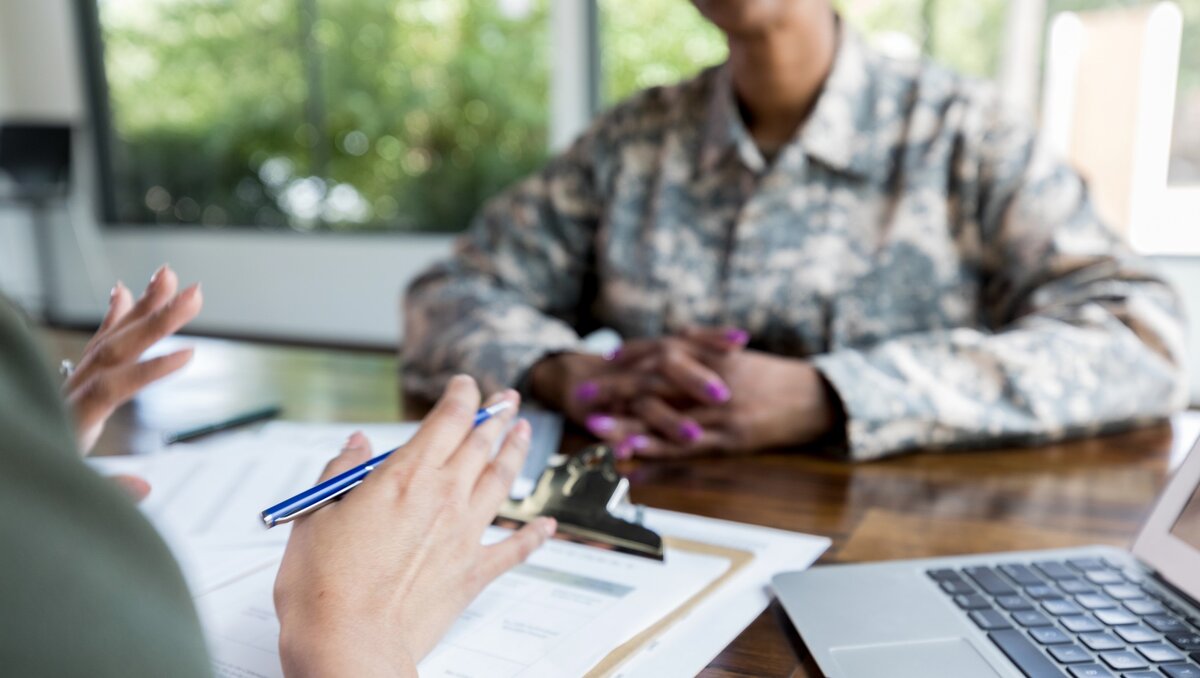Post-traumatic stress disorder (PTSD) refers to the chronic mental health condition that affects people who have experienced or witnessed traumatic events. While approximately 8 million Americans are affected by PTSD each year, war veterans are particularly vulnerable to developing this disorder due to the nature of their service. PTSD symptoms significantly impact veterans across the country, causing them serious distress, reducing their ability to function, and resulting in poor quality of life. This disorder also contributes to a variety of other mental and behavioral issues including anxiety, depression, and substance use. PTSD can increase suicidal ideations and attempts, orlead to the development of a wide range of medical problems, from chronic pain to gastrointestinal and cardiovascular issues.
PTSD Statistics Among Veterans
Because PTSD has been subject to changing definitions and diagnoses over time, statistics on the prevalence of PTSD among veterans vary widely between studies. Let’s look at the numbers. In 2014, researchers conducted a study of 3,1257 US veterans in which they determined that 4.8% of veterans are currently experiencing PTSD, and 8% have experienced lifetime symptoms. Of the respondents, 87% reported being exposed to at least one potentially traumatic life event, while on average, they experienced 3.4 of these events during their lifetime. A study in 2017 that followed 5,826 US veterans found that 12.9% of participants met the current diagnostic criteria for PTSD, compared to only 6.8% of the general population. The same year, researchers conducted a meta-analysis of 32 prior scientific articles on PTSD and found that up to 34.84% of veterans experience symptoms of this disorder.
Risk Factors for PTSD in Veterans
According to a meta analysis published in 2015, certain risk factors significantly increase the likelihood of a veteran developing PTSD.
These risk factors include:
- Prior trauma exposure or psychological issues
- Higher amount of adverse life events
- Increased exposure to combat
- Higher numbers of deployments
- Longer length of deployments
- Discharging a weapon in combat
- Witnessing others sustain severe injuries or die
- Lack of support after deployment during the post-trauma period
Additionally, certain demographic characteristics tend to predispose members of the military to develop PTSD. Women, ethnic minorities, and service members with lower educational attainment or non-officer ranking are more likely to experience PTSD than their counterparts. While veterans typically develop PTSD as a result of combat, they can also be exposed to other types of trauma, such as becoming aware of a close friend’s violent death or experiencing repeated or extreme exposure to the details of another person’s trauma. For example, a combat medic or military doctor may develop PTSD from treating severe and fatal wounds.
One risk factor for PTSD in veterans that is alarmingly common among all branches of the US military is sexual misconduct, referred to as military sexual trauma. Among veterans who use VA health care, 23% of female veterans reported sexual assault during their service, and 55% reported sexual harassment. Over HALF. Although research suggests that women are more likely to be victims of sexual assault in the general population, men represent over half of veterans who have experienced military sexual trauma.
Research also suggests that PTSD among veterans varies depending on the conflict in which they were involved. Among veterans of the Vietnam War surveyed in the National Vietnam Veterans Readjustment Study between 1986 and 1988, 15.2% of men and 8.1% of women met the criteria for PTSD, and lifetime prevalence of PTSD symptoms was reported among 30.9% of men and 26.9% of women. A study conducted from 1995 to 1997 determined that 12.1% of Gulf War veterans experienced PTSD during the time they were surveyed. A 2008 study of 1,938 veterans serving in Iraq and Afghanistan during Operation Enduring Freedom and Operation Iraqi Freedom found that 13.8% of veterans met the diagnostic criteria for PTSD.
Symptoms of PTSD

1. Intrusive Thoughts
Also known as re-experiencing symptoms, veterans experience the recurring, unwanted recollection of their trauma including vivid memories of disturbing combat situations and the thoughts, feelings, and sensations they experienced during these events. They can experience extremely intense emotional and physical reactions, from panic attacks and nightmares to terrifying flashbacks, in which their body responds as if they were witnessing or reliving the trauma all over again.
2. Extreme Avoidance of Triggers
Triggers refer to people, places, objects, or sensations connected to a traumatic event that cause the body to perceive danger, even in situations of comfort and safety. Common triggers for veterans include physical constraints, small spaces, crowds, depictions of combat, displays of anger or violence, certain places, and anniversaries of their trauma. To avoid exposure to sights, sounds, smells, tastes, or other sensations that remind them of the trauma, they often withdraw from family and friends, lose interest in the activities of everyday life, and refuse to discuss their trauma directly.
3. Altered Cognition and Mood
Traumatic experiences can disrupt cognition and mood in a variety of ways that can combine and magnify the effects, including:
- Difficulty recalling details of the traumatic event or what occurred immediately before or afterward
- Negative beliefs about themselves, other people, or the world as a whole
- Blaming themselves for the cause or nature of the trauma
- Feeling shame, guilt, fear, horror, and self-loathing in connection with these negative beliefs
- Experiencing a sense of detachment or estrangement from family and friends
- Being unable to experience positive emotions in the presence of situations that would typically be expected to warrant them
4. Changes in Arousal and Reactivity
Trauma causes fundamental changes in the brain that makes patients experience a constant sense of danger even in the absence of imminent threats. Specifically, PTSD over stimulates the amygdala, the area of the brain within the limbic system that is responsible for processing emotional responses, such as anxiety, fear, and aggression. Veterans with PTSD experience hypervigilance, a mental state of increased alertness and extreme sensitivity to their surroundings. When they encounter perceived threats, their amygdala initiates the fight or flight response, causing their body to flood with stress hormones, increase breathing and heart rate, and tense muscles to prepare for either confronting the threat or fleeing to safety.
These changes in arousal and reactivity can lead to:
- Irritability, anger, or a tendency for violent outbursts
- Dangerous, careless, or self-destructive behavior
- Reduced attention and concentration
- Sleep disturbances
PTSD Diagnosis
Helping veterans obtain PTSD diagnosis and treatment is crucial to ensuring they can find relief from their symptoms. Meeting the diagnostic criteria for PTSD requires experiencing the symptoms above for a minimum of one month, but they often continue for years, even with treatment. PTSD is diagnosed through a combination of self-report questionnaires and structured interviews with clinicians.
The most widely used self-report tools are the PTSD Checklist of the DSM-5 (PCL-5), a 20-item questionnaire that assesses the presence and severity of their symptoms and the Mississippi Scale for Combat-Related PTSD. It’sa 35-item questionnaire that provides a list of statements and asks respondents to rate their feelings about these statements using a Likert scale ranging from 1 (not at all true) to 5 (extremely true). The gold standard of PTSD assessment is the Clinician-Administered PTSD Scale for DSM-5. This 30-item structured interview features items corresponding to specific PTSD symptoms listed in the DSM-5, the principal text for diagnosis and treatment of mental health disorders.
PTSD Treatment – Therapy

Three specific cognitive behavioral therapies that are most often used to treat patients with PTSD are cognitive processing therapy (CPT), prolonged exposure (PE), and stress inoculation training (SIT). CPT focuses on the way people view themselves, other people, and the world around them following a traumatic experience. It tends to be particularly valuable for patients who tend to blame themselves for their trauma and teaches skills for recognizing these attitudes and reevaluating them with a critical perspective. PE involves behavioral therapy techniques in which patients gradually expose themselves to the memories of their trauma in a safe setting by discussing the details of the experience and confronting situations and people related to their trauma. SIT aims to alleviate anxiety by helping patients recognize their triggers and teaching coping skills, including muscle relaxation, breathing training, and guided self-dialogue.
PTSD Treatment – Medication
Some veterans with PTSD do not respond sufficiently to therapy alone, while others benefit most from a combination of therapy and medication. Extensive clinical research has demonstrated the effectiveness of selective serotonin reuptake inhibitors (SSRIs) for treating PTSD. SSRIs comprise a category of antidepressants that helps modulate the activity of the neurotransmitter serotonin, which is involved in regulating a variety of mental and physical functions, including mood, cognition, learning, memory, and sleep. The four medications with the strongest evidence base as effective PTSD treatment options are Fluoxetine (Prozac), Paroxetine (Paxil), Sertraline (Zoloft), and Venlafaxine (Effexor). SSRIs have demonstrated a 60% rate of effectiveness in treating PTSD symptoms, although only 20% to 30% of patients achieve full remission.
How to Help a Veteran with PTSD
When your loved one returns from active military duty and experiences symptoms of PTSD, it can be extremely challenging for them to adjust to ordinary life and it can significantly impact your family. You know they need your support, but it can be intimidating to know where to start. If you are concerned about helping a veteran with PTSD, there are certain steps you can take to offer support during this difficult time, including:
- Help them obtain treatment. PTSD does not resolve on its own, and patients require extensive, long-term treatment to achieve relief from their symptoms. Help them get in touch with qualified professionals who have experience in treating PTSD and other associated issues, such as depression, anxiety, and substance abuse. With evidence-based mental health treatment, they can manage their symptoms through therapy, medication, and helpful coping techniques.
- Do not take their behavior personally. Your loved one is experiencing a serious mental health disorder and may display a variety of alarming emotions, from irritability and anger to feeling emotionally numb or disconnected from the world. You must remember that this is a consequence of their service, not a reflection of how they feel about you. They need your full support during this time, and questioning your relationship can cause them to feel even more isolated.
- Do not pressure them into sharing. It is often incredibly difficult for people who have experienced trauma to open up, particularly due to the shame and guilt they feel and the desire to protect their disorder from impacting their loved Attempting to coerce them into talking before they are ready can make them shut down even further. Never force them to talk about the trauma itself or the thoughts and feelings they have about what they experienced but let them know you are available if they decide they want to talk and will help them in any way you can.
- Develop a plan to prepare for triggers. You should become aware of your loved one’s triggers so you can help avoid them. However, avoiding triggers is not always possible, so it is important that you and your loved one work together to develop a plan to handle this situation when it occurs. Discuss what has helped in the past and what has exacerbated their symptoms. When they are experiencing an episode, they may disassociate, making it crucial for you to ground them in the present moment. Remind them that they are experiencing a flashback and that the trauma is not actually happening again, direct their attention to their current surroundings, and encourage deep breathing. Never make physical contact without asking, as this can intensify their symptoms.
Seek Treatment for PTSD Today

Confronting PTSD is never easy, but you don’t have to do it alone. Speak with our team today to learn how we can help you manage your symptoms and empower you to move forward with your life.
*Editor’s Note: This article was originally published prior and has been updated July 13, 2021
